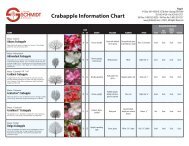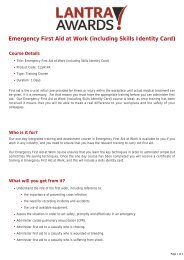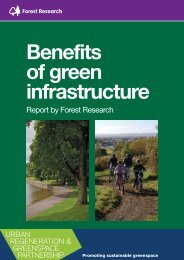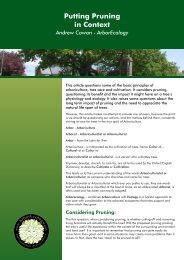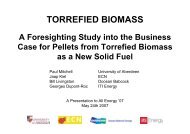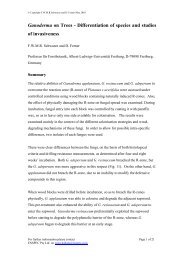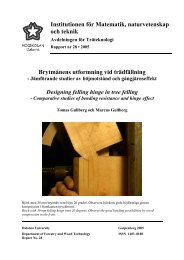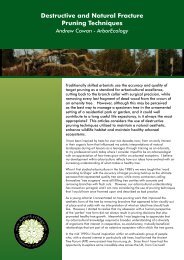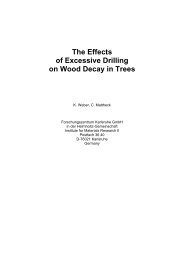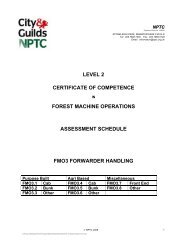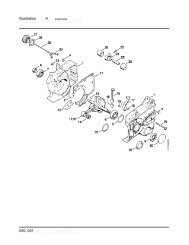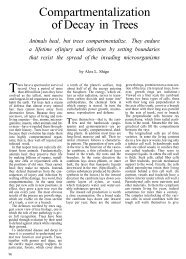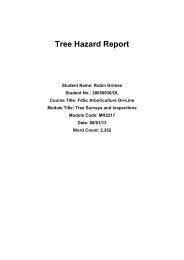working today for nature tomorrow - Justus-Liebig-Universität GieÃen
working today for nature tomorrow - Justus-Liebig-Universität GieÃen
working today for nature tomorrow - Justus-Liebig-Universität GieÃen
- No tags were found...
Create successful ePaper yourself
Turn your PDF publications into a flip-book with our unique Google optimized e-Paper software.
sites it was found that the possibility of <strong>for</strong>ming large groups was of greater importance thanthe thickness of the tree (Dietz & Frank personal observation).When reviewing the literature about tree-dwelling bat species it becomes clear thatwoodpecker holes play an important role <strong>for</strong> almost all bat species. These are primarily theholes of the great spotted woodpecker, middle spotted woodpecker, grey-headed, and greenwoodpecker (Picoides and Picus species). Holes of the black woodpecker are not oftenoccupied, possibly because of the big entrance and the danger of predation by martens.Crevices in the trunk or in strong side branches are also very frequently used, if they provideenough hollow room and hiding places above the entrance. Which of these two roost types ispreferred can be different in one species, depending on the area (cf. Daubenton’s bat: Nyholm1965, Geiger 1992, Dietz 1993, Rieger 1996). Initially it is presumably dependent on theavailability of structures in a region but the imprinting phase of the young could also play animportant role <strong>for</strong> habitat preference and roost selection, a feature typical of mammals.Roosting under loose bark is characteristic of the barbastelle (Steinhauser 2002, personalobservations), and sometimes also <strong>for</strong> Brandt’s or whiskered bats and Nathusius’ pipistrelles.Table 4 Tree hole types used by batsSpecieswoodpeckerholeRoost typecrevicesboughdamageBehindloose barkRhinolophus ferrumequinumRhinolophus hipposiderosMyotis daubentonii ● ● ○Myotis bechsteinii ● ○ ○Myotis nattereri ● ●Myotis mystacinus ○ ●Myotis brandtii ● ●Pipistrellus pipistrellus ○ ○Pipistrellus pygmaeus ? ?Pipistrellus nathusii ● ● ○ ●Eptesicus serotinus ○ ○Nyctalus noctula ● ● ○Nyctalus leisleri ● ● ○ ○Plecotus auritus ● ●Plecotus austriacusBarbastella barbastellus ○ ●[personal observation on Bechstein’s bat, Daubenton’s bat, Natterer’s bat, whiskered bat,Brandt’s bat, noctule, Leisler’s bat, brown long-eared bat and barbastelle; furthermore:Bechstein’s bat (Bayerl 2004), Daubenton’s bat (Rieger 1996), Natterer’s bat (Siemers andothers 1999), whiskered bat (Taake 1984, Godman 1995), Brandt’s bat (Dense & Rahmel2002), common pipistrelle (Taake & Vierhaus 2004), Nathusius’ pipistrelle (Schorcht andothers 2002, Vierhaus 2004), noctule (Gaisler 1979, Frank 1997), Leisler’s bat (Schorcht2002), brown long-eared bat (Fuhrmann & Seitz 1992) and barbastelle (Steinhauser 2002)]39



